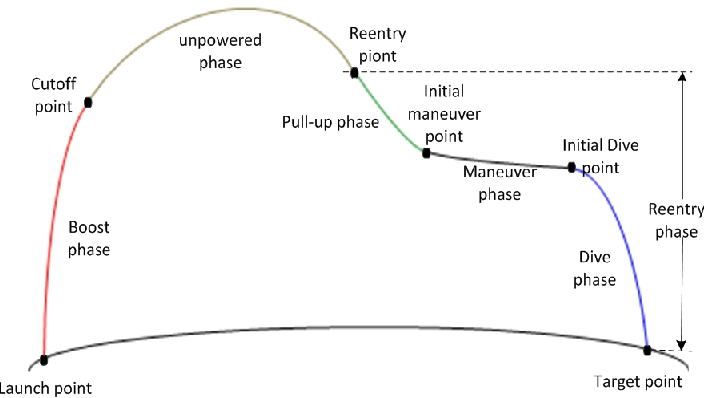They deployed a test batch to Ukraine for trials. It was then ordered into mass production. But it does not seem to be getting produced in the required amounts. In fact the factory was lambasted by Shoigu for the failed production while he was still Minister of Defense.I think the new coalition solves that problem, and I've seen somewhere that it started production (I don't know if it's deployed in Ukraine or not) So that issue should slowly disappear with time.
You are using an out of date browser. It may not display this or other websites correctly.
You should upgrade or use an alternative browser.
You should upgrade or use an alternative browser.
The War in the Ukraine
- Thread starter SampanViking
- Start date
Ukrainians sending naval drones into Novorossiysk. This time the Russians are ready. These look to me like BMPs with Berezhok combat modules, spitting 30mm and ATGMs. At least two naval drones are visibly destroyed.
Some Ukrainian MIC plant in the Dniepr was hit, likely by missile.
More accessible footage of Iskander with cluster munitions attacking airfield in Poltava containing helicopters.
Ukrainian 2S6 Tunguska hit by two Lancets in the Kharkhiv front.
Pzh2000 hit by a Lancet in the Kharkhiv front.
Four FABs arrive at the south of Volchansk.
More glide bombs arriving at Ukrainian positions in the Kharkhiv front.
More FABs arrive near the village of Staritsa in the Kharkhiv front.
Due to a new modification, FAB-500 with UMPK now has a range of 80km.
Russians now occupy the entire Kanal microdistrict of Chasiv Yar and expanding in the flanks.
Russians had a strong advance towards Niu York.
Akasya of Group Center forces manages to knock out a Strela-10 of the AFU.
Naval RBU-6000 being used as an MLRS in Chasiv Yar.
More arrivals in the Yuznash plant near Dniepr.
Plus a missile appears intercepted over the plant.
Russian air strikes on Ukrainian position near Liptsy.
Some Ukrainian MIC plant in the Dniepr was hit, likely by missile.
More accessible footage of Iskander with cluster munitions attacking airfield in Poltava containing helicopters.
Ukrainian 2S6 Tunguska hit by two Lancets in the Kharkhiv front.
Pzh2000 hit by a Lancet in the Kharkhiv front.
Four FABs arrive at the south of Volchansk.
More glide bombs arriving at Ukrainian positions in the Kharkhiv front.
More FABs arrive near the village of Staritsa in the Kharkhiv front.
Due to a new modification, FAB-500 with UMPK now has a range of 80km.
Russians now occupy the entire Kanal microdistrict of Chasiv Yar and expanding in the flanks.
Russians had a strong advance towards Niu York.
Akasya of Group Center forces manages to knock out a Strela-10 of the AFU.
Naval RBU-6000 being used as an MLRS in Chasiv Yar.
More arrivals in the Yuznash plant near Dniepr.
Plus a missile appears intercepted over the plant.
Russian air strikes on Ukrainian position near Liptsy.
Footage of an attack by two Ukrainian naval drones, presumably MAGURA, on Russian ships in the Black Sea near the city of Novorossiysk. Perhaps the attack was aimed at the Russian patrol ship “Ladny” of Project 1135 and a large landing ship of Project 775. Judging by the video, the ships did not repel the attack of sea drones; the fire was fired from the shore or from other ships not included in the video. As a result of the battle, both sea drones were destroyed.
Attack on the Yuzhmash defense plant of Ukraine on July 3. Powerful explosions occurred at the Yuzhmash plant in the Dnepropetrovsk region. According to Ukrainian media, a combined attack on the largest defense enterprise in eastern Ukraine, the Yuzhmash plant, was carried out by the Russian army.
The attack used Iskander-M, Iskander-K and Kh-59 missiles, as well as kamikaze drones Geran and Orlan-10. According to Ukrainian media, the air defense shot down everything except two Iskander-K missiles.
The attack used Iskander-M, Iskander-K and Kh-59 missiles, as well as kamikaze drones Geran and Orlan-10. According to Ukrainian media, the air defense shot down everything except two Iskander-K missiles.
It is possible. It is not the first time that the west has been suspected of or proven of fabrication of "evidence", from the infamous Iraqi WMD to the later ROK Cheonan sinking in which case the purported NK torpedo seemed to have been in water months earlier before the incident, and the Korean marking on the "NK" torpedo was actually in SK character.Is it possible the West recovered parts of these missiles from a missile test and shipped them to Ukraine for a photo op?
I think no morden ballistic missiles are purely ballistic so long as they have active means of changing AoA by measures including fins primarily. When people say the word "ballistic" I assume that they are aware of the "non ballistic" nature. The word "ballistic" is only to distinguish such terminal maneuverable missile from true glider HGV and cruise missiles. I mean nobody would emphasize that Iskander and DF-21D are not ballistic missiles even though they are wellknown to maneuver.The ATACMS is not a ballistic missile itself, because its trajectory does not follow faithfully like a ballistic form. Like PrSM, the terminal flight profile is believed to include a near-vertical dive toward its target to maximize terminal speed and accuracy, terminal speed is likely greater than Mach 3:

The apogee of a ballistic missile with a range of 300 km is normally above 80 km, and can reach an altitude of 100 km. ATACMS only climbs up to 65 km in altitude, allowing the missile to avoid most surface-to-air defense systems while maintaining the accuracy needed for precision strikes.
This is why the Russians are unable to respond to HIMARS/M270 fire with ATACMS, the Russian ISTAR capability in depth(>250 km) which basically depends on the VKS is still too small to be able to track and locate to carry out counterbattery fire against platforms launching ATACMS. The aeroballistic trajectory of the ATACMS complicates the entire Russian counterbattery effort, combined with the post-fire movement of the ATACMS launch platform makes everything more difficult for the Russian ISTAR.
There was an explosion in a General Dynamics facility in Arkansas
Also seems Russia breached the defenses at New York, one of the areas that had been constantly fortified since 2014, according to the Ukranians
Worthy of note that after the fall of Avdeevka, punitive shellings on downtown Donestk have gone down.
Also seems Russia breached the defenses at New York, one of the areas that had been constantly fortified since 2014, according to the Ukranians
Worthy of note that after the fall of Avdeevka, punitive shellings on downtown Donestk have gone down.
Iskander M hits Dolgintsevo airfield near Krivoy Rog. It looks like a MiG-29 got destroyed. The Su-25 decoys aren't fooling anyone, though two are destroyed as collateral damage. Vehicles and other equipment destroyed and allegedly 15 killed.
FAB strikes on the village of Grigorovka, north of Chasiv Yar.
Ukrainian armored vehicle hit by FPV drone from the Vega detachment.
Once again, Ukrainian PVD gets hit in Prechistovka, this one by LMUR.
Syrsky publishes video about a strike in Torestk but it turns out to be a Russian strike on Ukrainian positions.
The 238th hitting camouflaged Ukrainian artillery with MSTA-S howitzers.
Ukrainian 'police department' getting hit by multiple FABs. This particular footage is incredible. Region is Kherson.
Ukrainian electronic warfare station gets hit by Lancet.
FAB hits in the Kharkhiv front.
Arty strikes, Kharkhiv front.
Krasnopol strikes, Kupyansk front.
FAB strikes on the village of Grigorovka, north of Chasiv Yar.
Ukrainian armored vehicle hit by FPV drone from the Vega detachment.
Once again, Ukrainian PVD gets hit in Prechistovka, this one by LMUR.
Syrsky publishes video about a strike in Torestk but it turns out to be a Russian strike on Ukrainian positions.
The 238th hitting camouflaged Ukrainian artillery with MSTA-S howitzers.
Ukrainian 'police department' getting hit by multiple FABs. This particular footage is incredible. Region is Kherson.
Ukrainian electronic warfare station gets hit by Lancet.
FAB hits in the Kharkhiv front.
Arty strikes, Kharkhiv front.
Krasnopol strikes, Kupyansk front.


